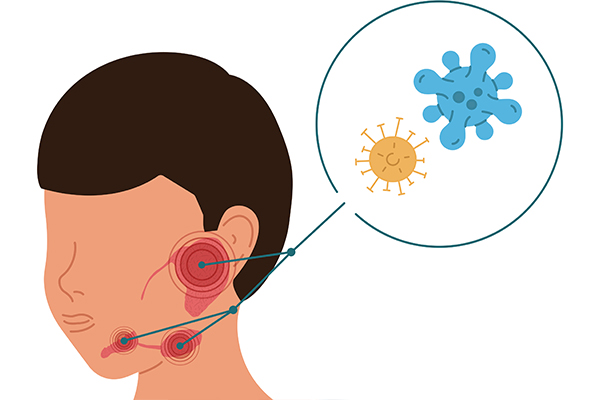Salivary Gland Tumors and Malignancies in Children
Salivary gland tumors and malignancies (cancer) in the tissues of the salivary glands are rare.
Salivary glands produce and release saliva into the mouth. Saliva enzymes help digest food and protect against mouth and throat infections.
There are three pairs of major salivary glands:
Parotid glands: Located in front of and just below each ear. The parotid glands are the largest salivary glands and where most salivary gland tumors begin.
Sublingual glands: Located under the tongue on the floor of the mouth.
Submandibular glands: Located below the jawbone.
Facts about Salivary Gland Tumors and Malignancies
- Most salivary gland tumors in children are not cancerous (benign).
- Malignant tumors are more common in young children.
- The prognosis for salivary gland cancer in children is usually good.
Risk factors for salivary gland cancer in children
Risk factors for salivary gland cancer include:
- A history of cancer may increase the child’s risk of salivary gland tumors.
- Previous treatment of cancer using chemotherapy or radiation.
Signs and symptoms of salivary gland cancer in children
- A painful or painless lump near the ear, cheek, jaw, lip, or inside the mouth.
- Numbness or weakness in the face.
- Continuous pain in the face.
How salivary gland cancer is diagnosed in children
In conjunction with a physical exam and patient history, physicians use tests that examine the mouth and throat to diagnose salivary gland cancer. These tests include CT scans, MRIs, PET-CT scans, ultrasounds, and biopsies.
Treatment for Salivary Gland Cancer in children
Staging treatment is a way to see if the disease has spread. This information helps the care team choose the best treatments.
Treatment includes:
-
- Surgery: to remove the tumor
- Radiation therapy: the use of radiation to kill cancer cells and keep them from growing or spreading
- Targeted therapy: the use of drugs to attack specific cancer cells
- Clinical trials: used to discover new ways to treat salivary gland cancer
Effective Treatment for Pediatric Salivary Gland Tumors in Atlanta, GA
If your child is experiencing symptoms related to salivary gland tumors or requires specialized Children’s ENT in Atlanta, our expert team is here to help. We also provide comprehensive evaluations and personalized treatment plans in Alpharetta, Duluth, or Marietta to ensure the best care for your child. Contact us today to learn how we can assist your child’s health and well-being.


